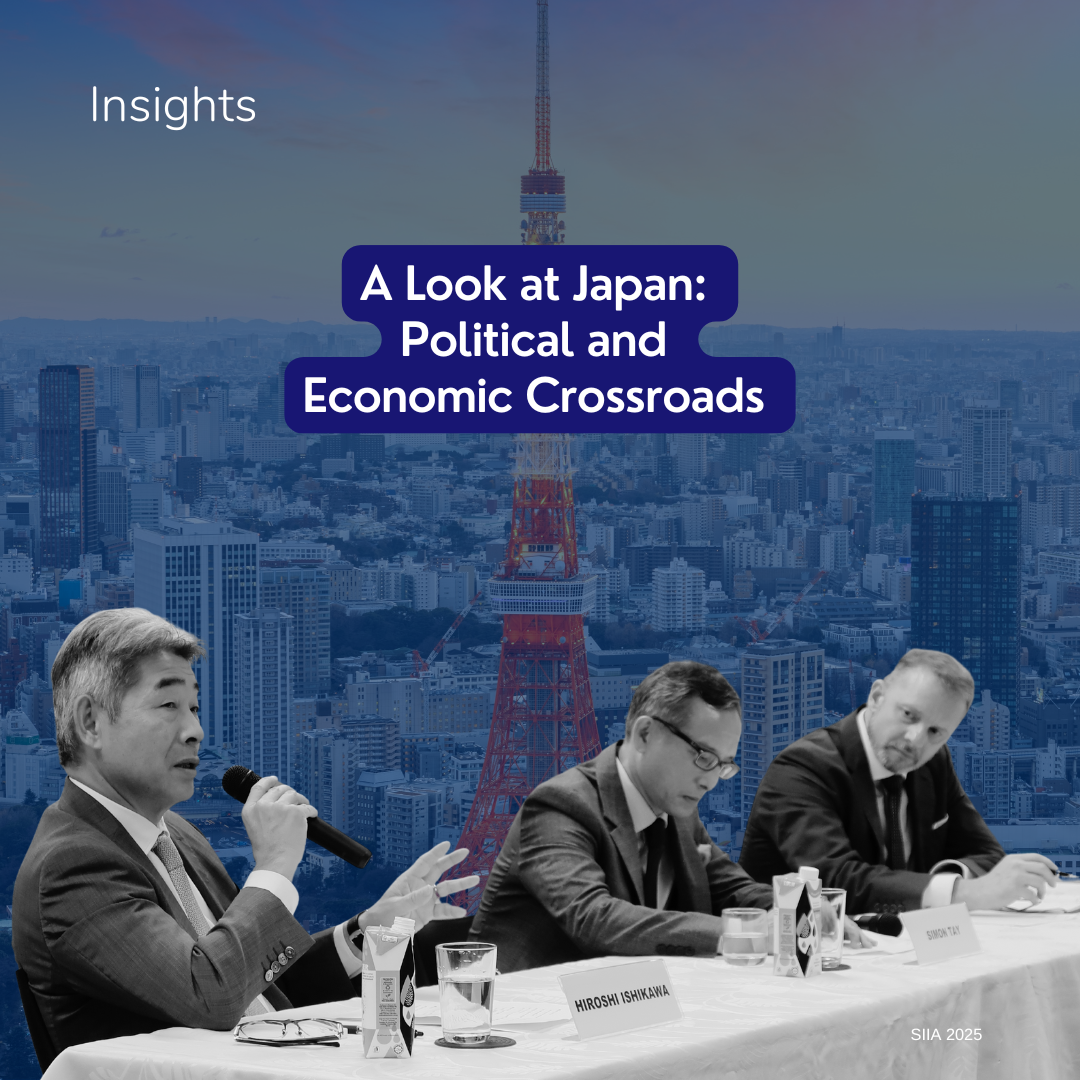Japan has sworn in its first female Prime Minister, Sanae Takaichi, marking a historic milestone in the nation’s political history. Her appointment comes at a pivotal moment, as Japan’s ruling party, held together by a fragile coalition, grapples with significant economic and political challenges. At the same time, Japan must navigate an increasingly complex geopolitical environment shaped by its relations with major powers such as the United States and China. Some of these topics were explored at the “A Look at Japan: Political and Economic Crossroads” panel discussion organised by the Singapore Institute of International Affairs (SIIA) on 14th October 2025.
The discussion featured insights from H.E. Ambassador Hiroshi Ishikawa, Ambassador of Japan to Singapore, Embassy of Japan to Singapore and Dr. Andrew Staples, Principal, GeoPol Asia.
Key Takeaways
Domestic issues
Ambassador Ishikawa painted a picture on the current political and social climate in Japan. As the world’s most aged society, with nearly 30% of its population over 65, the nation faces mounting strain on its welfare systems and labour force. Economic inequality is also widening, particularly among people in their 30s, deepening the challenges faced by the working generation.
Meanwhile, Japan’s foreign resident population has surged to 3.95 million, introducing both cultural diversity and social tensions as communities adjust to rapid demographic change. Amid these pressures, the emergence of new political forces reflects evolving public sentiment and the search for fresh leadership to address these complex issues.
Economic Landscape and Geoeconomic Strategy
Dr. Staples identified four major themes shaping Japan’s current economic landscape: inflation, immigration, investment, and innovation. Persistent inflation, above the Bank of Japan’s 2% target, is driven by high import costs and a weak yen, eroding real wages and fuelling social discontent. At the same time, immigration presents both opportunity and tension, as labour shortages spur demand for foreign workers while “over-tourism” and rapid demographic change cause local friction and populist backlash.
On a more positive note, investment is gaining momentum, with strong domestic corporate spending and rising foreign interest fuelled by governance reforms and a growing startup ecosystem in cities like Tokyo and Fukuoka. Meanwhile, innovation has become essential amid a shrinking population and labour force, accelerating Japan’s digital transformation and automation efforts.
Complementing these trends, Japan’s strategic industrial policy, especially in semiconductors, seeks to bolster economic security through partnerships with firms like TSMC and domestic ventures such as Rapidus. Despite slow overall growth, Japan’s rising GDP per capita and the eventual redistribution of wealth from its aging population suggest deeper resilience beneath the surface.
Foreign Policy and Trade
Ambassador Ishikawa highlighted that the U.S.–Japan alliance remains the cornerstone of Japan’s foreign policy. However, under the current Trump administration, Japan has also faced challenges, including the imposition of tariffs and a commitment to invest US$550 billion into the United States, to be completed by the end of President Trump’s term. Dr. Staples described the investment move as a sophisticated geoeconomic manoeuvre, positioning Japan “at the heart of America’s strategic industries,” thereby securing preferential access for Japanese firms and deepening the bilateral security partnership.
Japan continues to seek a “stable and constructive relationship with China,” though this remains complicated by rising nationalism and fundamentally different political systems. While Beijing has extended some positive gestures, such as easing restrictions on Japanese beef and seafood imports, maritime tensions in the East China Sea persist as a key point of contention.
Amid these global and regional shifts, Japan is recalibrating its economic engagement toward Southeast Asia, focusing on private sector investment given constraints on public funding. Japanese corporations increasingly view ASEAN as a prime destination for foreign direct investment, driven by a shrinking domestic market and growing difficulties investing in China due to economic and security concerns. In contrast, Southeast Asia offers a stable and steadily expanding environment, making it an attractive and “safe” investment hub. Consequently, Japanese FDI into ASEAN is expected to continue growing in the years ahead.




